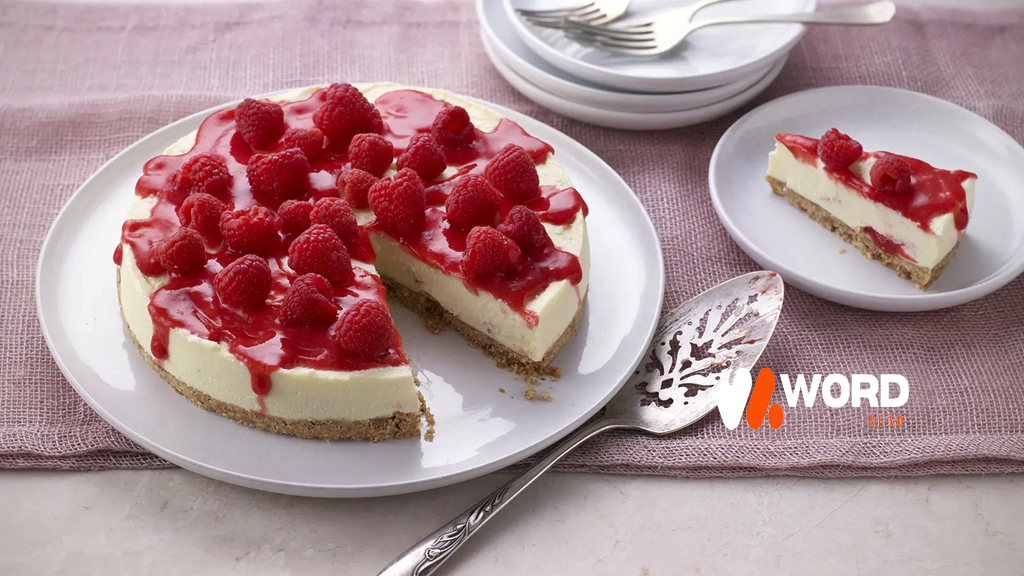Cheesecake
Cheese cake makes it one of the most popular desserts in the world due to its rich flavour, creamy texture, and versatility. The classic New York-style cheesecake is the fluffy, light Japanese version, or the no-bake option. This delicate nature has captured the hearts of millions of people. We’ll look into the history, its widespread popularity, various preparation methods, and even some surprise health advantages.
Origin of Cheesecake
Cheese cake has existed for thousands of years. The earliest known cheese cakes date back to 776 BC when they were presented to athletes at the initial Olympic Games in ancient Greece. The original captured its recipe, which called for basic ingredients like cheese, honey, and wheat, was recorded by the Greek author Athenaeus in 230 AD. After that, the recipe was picked by the Romans, who developed their empire and popularized it throughout Europe.
Various regions started to add their own distinctive touches during the Middle Ages by using unique cheeses and ingredients. European immigrants had introduced the customs of it to America. When cream cheese became widely affordable and was used in recipes, then New York-style cheese cake was created by people.
Popularity of Cheesecake
Cheese cake is a worldwide sensation with each nation adding its own unique twist on the traditional deliciousness. One of the most popular types is New York-style cheese cake. It distinguishes its rich and creamy texture because it contains more cream. Philadelphia-style cheesecake is creamier and lighter. Whipping egg whites gives Japanese cake a unique fluffy and soufflé-like texture. Italian cake has a lighter, less smooth texture since it is made with ricotta cheese compared to American cake. The curd cheese used to make Käsekuchen gives it a little acidic flavour.
Different ways to cook Cheesecake
There are various ways to make cheese cake, and each one has its own distinct flavors and textures.
- Baked Cheesecake
Baked cheese cakes contain eggs usually made in an oven. Cheese cake in the New York style is the most well-known example. The secret to making the ideal baked cheese cake is to use a bain-marie, or water bath, to ensure consistent cooking and to prevent cracks.
- No-Bake Cheesecake
This method involves storing the cheese cake in the refrigerator instead of baking it. The cream cheese, sugar, whipped cream, and gelatin are combined and refrigerated until solid. Warm weather makes no-bake cheesecakes ideal when you don’t want to use the oven.
- Steamed Cheesecake
The airy and fluffy texture of steamed cheese cakes makes them popular in Japan. A delicate and soft cake is produced by making it with mild steam heat rather than dry heat.
- Vegan Cheesecake
Vegan cheesecakes are made with cashew cream, coconut milk, or tofu, as well as natural sweeteners, especially for individuals who would rather have an organic version.
Health benefits of Cheesecake
It has some surprising health benefits when eaten in moderation. An important quantity of protein is necessary for muscle growth and repair. It provides the dairy in cheese cake. Calcium is also included in cheesecake. It promotes healthy bones and teeth. The healthful fats included in foods like cream cheese and eggs are essential for energy and brain function.
A lot of people use almond flour crusts and sugar alternatives to produce low-carb cheese cakes as keto diets gain popularity. Certain cheesecakes that contain fermented dairy products, such as quark or Greek yogurt, have probiotics that help with digestion.
Classic New York-Style Cheesecake Recipe
Preheat your oven to 325°F (163°C). Combine the melted butter. Add two tablespoons of sugar, and graham cracker crumbs in a bowl. Fill the bottom of a springform pan with the mixture and smooth it firmly. After 10 minutes in the oven, let it cool. Cream cheese should be softened out in a large mixing dish. Add the vanilla and sugar, and stir thoroughly. Add each egg one at a time and beat until hardly blended. Stir in the sour cream until smooth.
Serve the filling on the puff pastry. Place the springform pan in a bigger baking pan and fill the outer pan with hot water. Bake for 55 to 60 minutes in a bigger baking pan until the centre is just firm but still soft. After turning off the oven, leave the door slightly open to allow the cheesecake to cool inside. Place in the refrigerator for at least four hours, approximately overnight. Garnish with chocolate drizzle, whipped cream, or fresh berries before serving.
